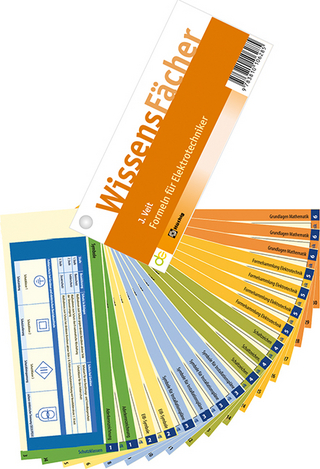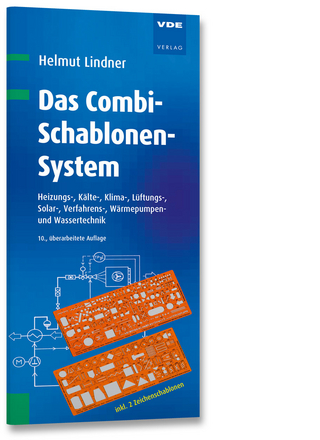
High Voltage DC Transmission Systems
Springer International Publishing
978-3-031-27352-0 (ISBN)
- Noch nicht erschienen - erscheint am 25.06.2025
- Versandkostenfrei innerhalb Deutschlands
- Auch auf Rechnung
- Verfügbarkeit in der Filiale vor Ort prüfen
- Artikel merken
Furthermore, the book will describe the different technologies presently in use to covert AC to DC power, and vice versa, as well as how these technologies perform within a wider HVDC system.
This book provides information about all stages of the life of an HVDC project, from identification of the need for an HVDC scheme, through to its final disposal. This includes discussions of:
- requirements regarding integration in the AC networks;
- planning and other studies;
- cost benefit analysis;
- project specifications;
- environmental issues;
- performance and operational requirements;
- detailed descriptions of the components;
- project commissioning and implementation; and
- lifetime performance monitoring of reliability and availability.
Furthermore, the book will describe the different technologies presently in use to covert AC to DC power, and vice versa, as well as how these technologies perform within a wider HVDC system. These thorough descriptions mean that High Voltage DC Transmission Systems will beof interest to electrical engineers with little or no knowledge of HVDC technology, as well as those wishing to deepen their understanding.
Readers who would like to comment on any of the published books or identify errors to the editorial team please contact: cigregreenbooks@springer.com.
CIGRE Study Committee B4 deals with High Voltage Direct Current (HVDC) and Power Electronic (PE) in transmission networks. In an HVDC Transmission system, converter stations are used to convert AC to DC and vice versa at the connection points in the ac network(s), energy is then transmitted from generation stations to load centers through a long distance overhead line and/or cables between the converter stations. HVDC systems can also provide interconnectivity between side-by-side asynchronous ac networks. Study Committee B4 also addresses DC and PE for other applications such as distribution systems, DC Converters for the integration of distributed renewable generation (PVs and wind) and energy storage as well as power quality enhancement. Presently there are two main HVDC technologies: thyristor based Line Commutated Converter HVDC (LCC-HVDC), and transistor such as IGBT based Voltage Sourced Converter HVDC (VSC-HVDC). Dr. Bjarne R. Andersen is the Director and Owner of Andersen Power Electronic Solutions Limited, which was established in 2003. Before becoming an independent consultant, he worked for 36 years for what is now GE Grid, where his final role was as Director of Engineering. He was involved with the development of the first chain link STATCOM and the re-locatable SVCs concept. Dr. Andersen has extensive experience in all stages of LCC and VSC HVDC projects. As a consultant, he has worked on several international HVDC projects, including the Caprivi Link, the first commercial VSC HVDC project to use an HVDC overhead line, and a VSC HVDC project for multi-terminal operation permitting multi-vendor access. Dr. Andersen was the Chairman of Cigré SC 14 from 2008 to 2014 and initiated several working groups in the area of HVDC Grids. He is an Honorary member of Cigré, and was the 2012 recipient of the prestigious IEEE PES Uno Lamm Award for his contributions towards HVDC technology. Dr. Andersen was the Editor of ‘Flexible AC Transmission Systems: FACTS’. Stig Nilsson began his career working for the Swedish State Telephone Board with carrier communication systems. Following this, he worked for ASEA for 11 years (now ABB) with HVDC systems where he was involved with system studies for the first HVDC link on New Zealand and later he became the Control Systems Engineer for the ASEA-GE Pacific HVDC Intertie project on USA’s West Coast. At the end of this project he began working for Boeing with computer system developments and then for almost 20 years with EPRI in USA where he led many research and development (R&D) projects associated with HVDC systems and components. Prior to joining Exponent in year 2000, he was an independent consultant and later a VP in the Silicon Power Corporation, which manufactured high power semiconductor devices and medium voltage equipment for electric utility applications. Mr Nilsson is a Life Fellow of IEEE. He has chaired the IEEE PES T&D Committee, the IEEE Herman Halperin Electric Transmission and Distribution Award Committee, the IEEE PES Nari Hingorani Facts and Custom Power Awards Committee, several IEEE Fellow nomination review committees, been a member of the IEEE Standards Board, IEEE PES subcommittees and working groups. He has been the US Representative and Secretary of CIGRE Study Committee B4 on HVDC and Power Electronics. He is the recipient of the 2012 I.E. PES Nari Hingorani Facts and Custom Power Awards. He received the CIGRE U.S. National Committee Philip Sporn Award and the CIGRE Technical Committee Award in 2012. He has also received the CIGRE Distinguished Member Award for active participation in CIGRE Study Committees and the USNC of CIGRE (2006); and the CIGRE USNC Attwood Associate Award in 2003. Stig Nilsson is a registered Professional Engineer in the state of California, USA.
Part I: Introduction.- Introduction.- Overview of HVDC.- Terminology, Symbols, Definitions, and Abbreviations.- Part II: Technical Design of HVDC Converters.- AC/DC Converters.- Converter Station Insulation Co-Ordination.- Converter/Interface Transformers.- AC and DC Reactors.- AC and DC Capacitors.- Converter Station Switchgear.- Control and Protection of Converter Stations.- Power Losses.- Layouts.- Part II: Other Essential Parts of HVDC Systems.- HVDC Overhead Lines.- HVDC Cables.- Auxiliary Power.- Neutral Return, Earthing and Electrodes.- Part IV: Harmonics.- Harmonics - Pre Specification.- Harmonics - Bidding/Contract Phase/Lifetime.- Part V: Interactions Between HVDC Converters and the AC Network.- Performance of the HVDC Scheme During Temporary Faults.- Interaction with Other AC Network Components and Power Electronics.- Part VI: Planning and Implementation of HVDC Systems.- Cost Benefit Analysis.- Power Losses.- Planning of HVDC Schemes.- Modelling and Studies for Planning andOperational Purposes.- Environmental Impact of HVDC Converter Stations.- Audible Noise.- Electromagnetic Compatibility.- Commissioning of HVDC Schemes.- Operation and Maintenance of HVDC Schemes.- Part VII: Application Examples.- Application Examples (LCC and VSC).- Part VIII: Reliability and Performance of HVDC Schemes.- Performance of HVDC Schemes -Reliability, Availability and Maintainability.- Life Extension and Upgrading of Converter Stations, Final Disposal.- Part IX: Compendium of HVDC Schemes.
| Erscheint lt. Verlag | 25.6.2025 |
|---|---|
| Reihe/Serie | CIGRE Green Books |
| Zusatzinfo | XX, 1380 p. 320 illus., 250 illus. in color. In 2 volumes, not available separately. |
| Verlagsort | Cham |
| Sprache | englisch |
| Maße | 155 x 235 mm |
| Themenwelt | Technik ► Elektrotechnik / Energietechnik |
| Schlagworte | Bipole HVDC • Commutation Failure • High Voltage Direct Current • HVDC • IGBT • insulated-gate bipolar transistor • Monopole HVDC • Overhead Lines and Cables • Reactive Power • Thyristor |
| ISBN-10 | 3-031-27352-4 / 3031273524 |
| ISBN-13 | 978-3-031-27352-0 / 9783031273520 |
| Zustand | Neuware |
| Haben Sie eine Frage zum Produkt? |
aus dem Bereich


